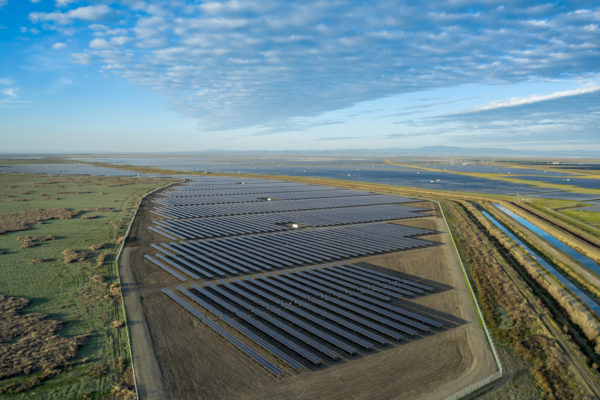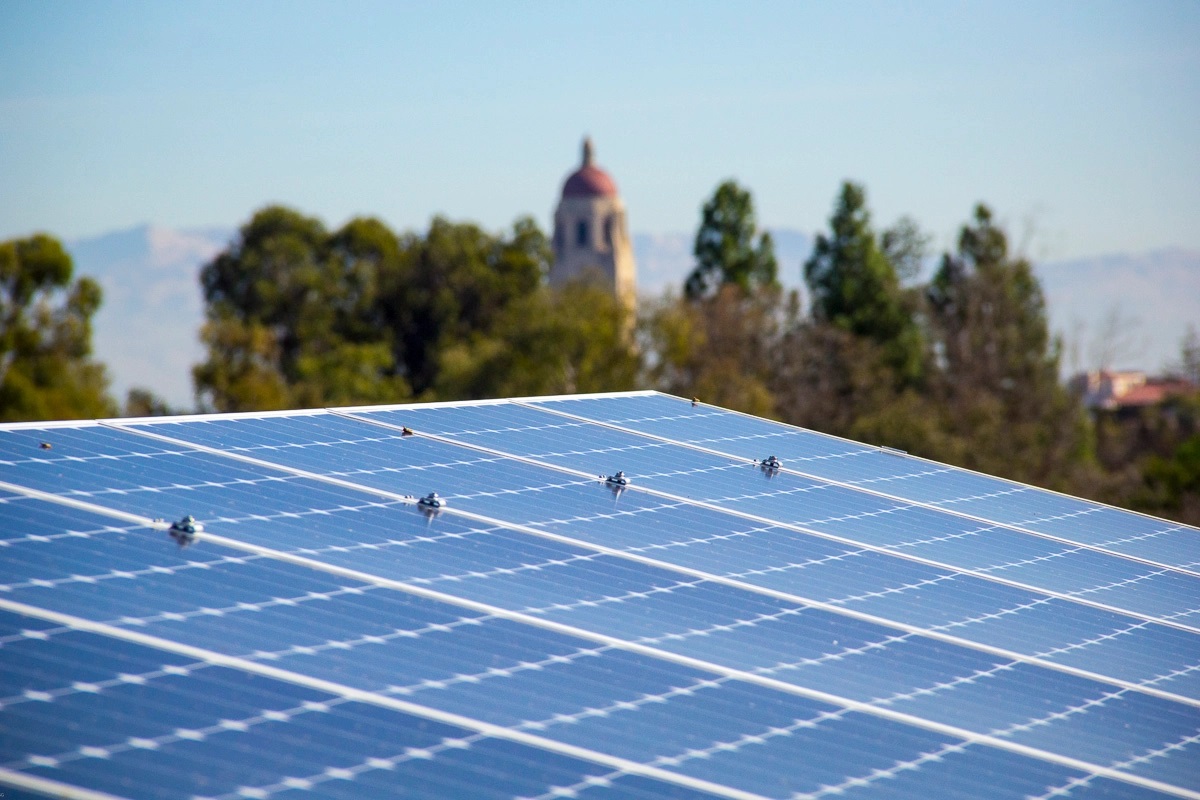The solar generating station that came online this week will bring Stanford to an 80% reduction in campus greenhouse gas emissions as part of a complete overhaul of the university’s entire energy system, and it brings the university to 100% renewable electricity.
This milestone of 100% renewable electricity is a major step toward our goal of net zero emissions by 2050. Stanford has worked to transform its campus into a living laboratory for environmental action and aims to model sustainability across all aspects of campus life. We hope these efforts will also provide insights that help other universities, jurisdictions and entities looking to transition to a zero-carbon future, said Lincoln Bleveans, Executive Director of Sustainability & Energy Management
Stanford’s Solar Installations
The 67MW Stanford Solar Generating Station #1, located in Rosamond, CA, came online in 2016.

5MW was installed on rooftops on campus in 2017. And the Stanford Solar Generating Station #2, which came online this week, is an 88MW array constructed near Lemoore, CA, through a power purchase agreement with Goldman Sachs Renewable Power. There is also a 200MWh Battery Energy Storage System co-located with this system.
Stanford embarked on this path in the 1980s, when the university implemented net metering on its facilities for the purpose of understanding how and where energy was being used, and in 2009 the university released its long-range Energy and Climate Action plan. That plan is now in its third edition and includes high-efficiency standards for new buildings, continued efficiency improvements for existing buildings, and the cutting-edge energy supply system known as the Stanford Energy System Innovations (SESI) project.
SESI moved the university from a 100% fossil-fuel-based combined heat and power plant to grid-sourced electricity and a more efficient electric heat recovery system. SESI uses the technology roadmap for building heating and cooling recommended by the International Energy Agency, which the United Nations Environment Programme also recently discussed in a comprehensive report for district-level implementation.
Stanford was recognized in 2021 as one of only eleven US universities to achieve the Platinum rating and is the top-ranked doctoral university in the Energy category in the Association for the Advancement of Sustainability in Higher Education’s (AASHE) 2021 Sustainable Campus Index. And Stanford has taken further steps as it transitions to clean energy. It was the first US college or university to issue bonds carrying dual climate and sustainability designations for financing campus construction and renovation projects in 2021 ($375 million). And the school has a goal of zero waste by 2030 (defined as 90% diversion of waste away from the landfill). The current diversion rate is approximately 67% of which waste is composted, re-used, or recycled. In addition, Stanford has implemented a water conservation plan that reduced total campus potable water use by 48% since the program began in 2001.
This article was amended on 3/18/2022 to reflect that Goldman Sachs Renewable Power is now the owner of the Stanford Solar Generating Station #2, having acquired it in 2020 from Recurrent Energy. Also to state that there is energy storage at the facility.
This content is protected by copyright and may not be reused. If you want to cooperate with us and would like to reuse some of our content, please contact: editors@pv-magazine.com.









By submitting this form you agree to pv magazine using your data for the purposes of publishing your comment.
Your personal data will only be disclosed or otherwise transmitted to third parties for the purposes of spam filtering or if this is necessary for technical maintenance of the website. Any other transfer to third parties will not take place unless this is justified on the basis of applicable data protection regulations or if pv magazine is legally obliged to do so.
You may revoke this consent at any time with effect for the future, in which case your personal data will be deleted immediately. Otherwise, your data will be deleted if pv magazine has processed your request or the purpose of data storage is fulfilled.
Further information on data privacy can be found in our Data Protection Policy.